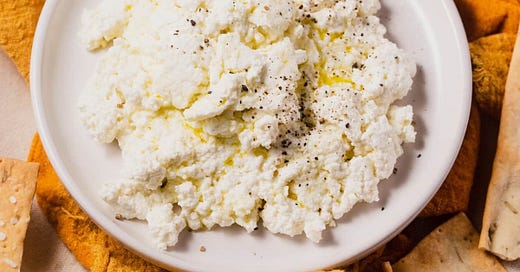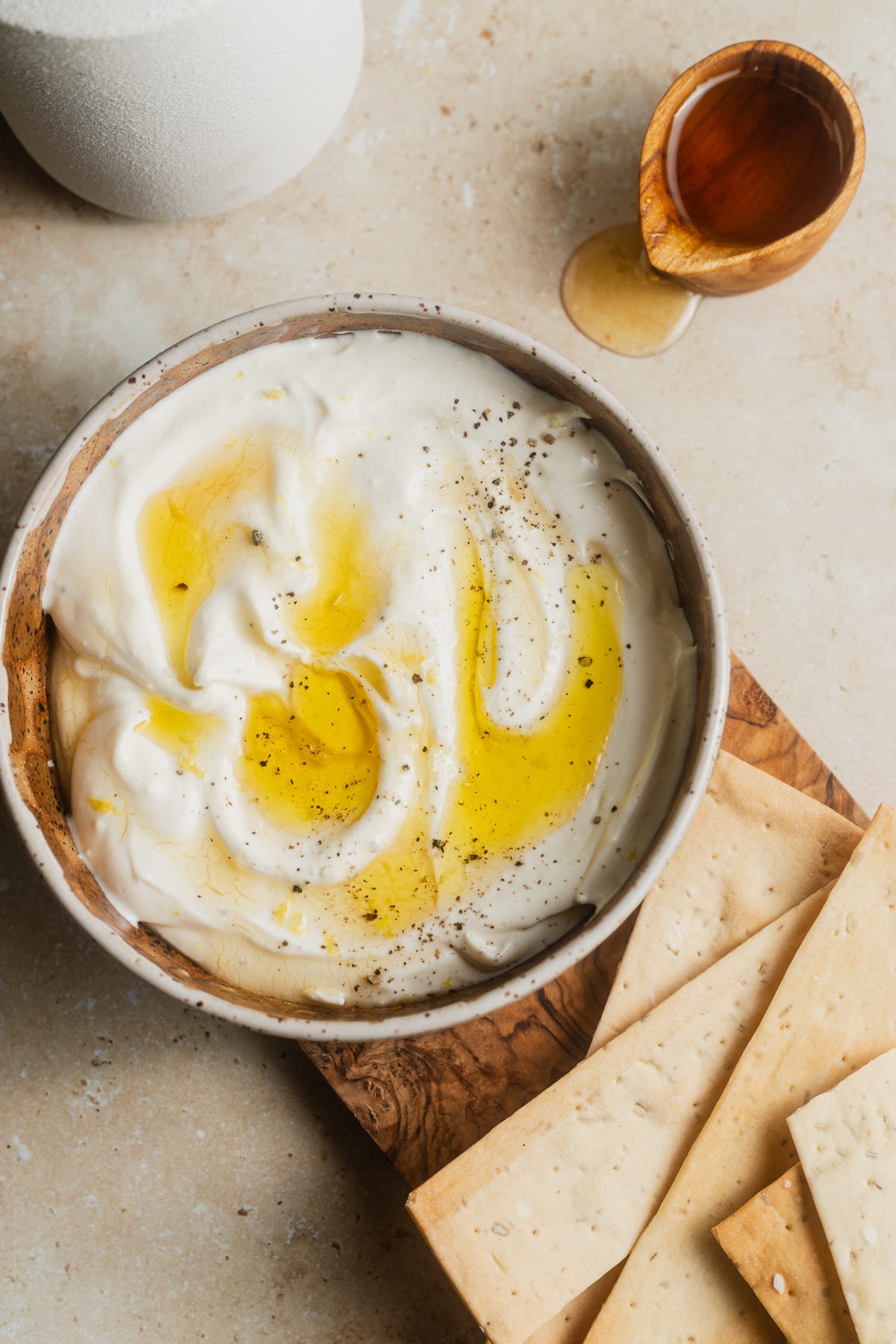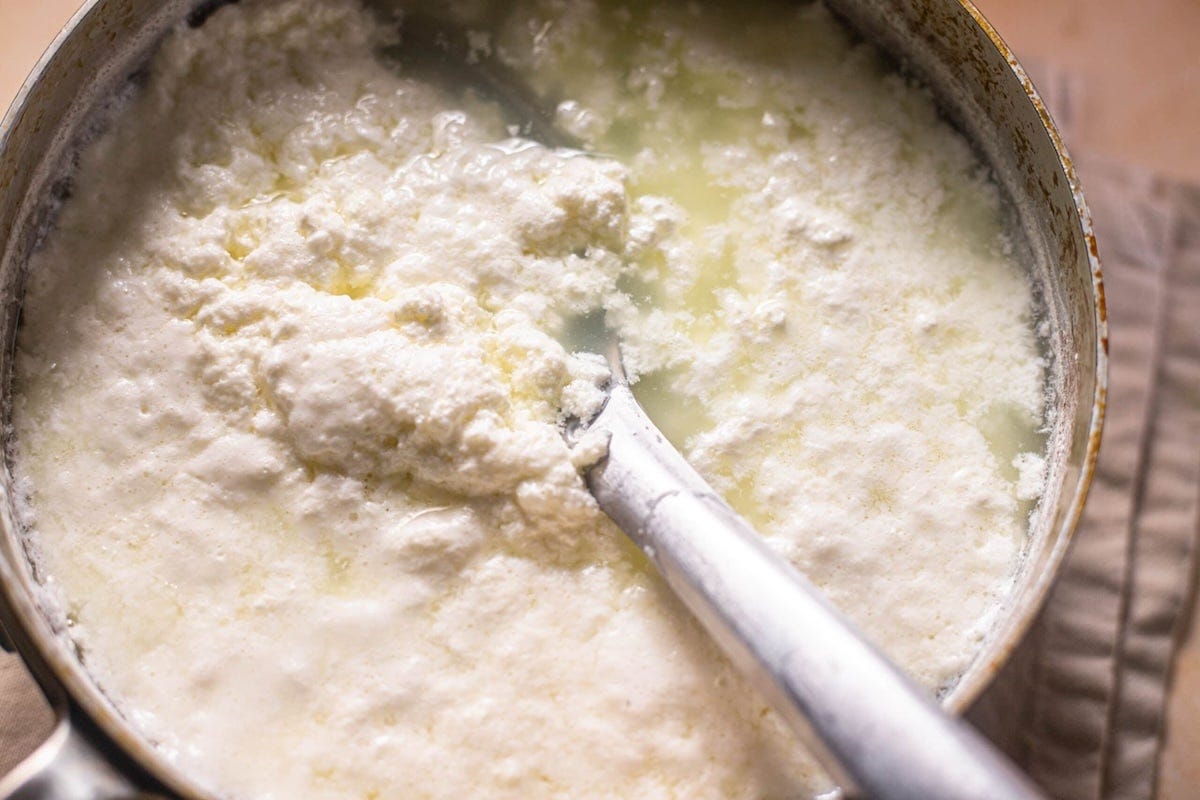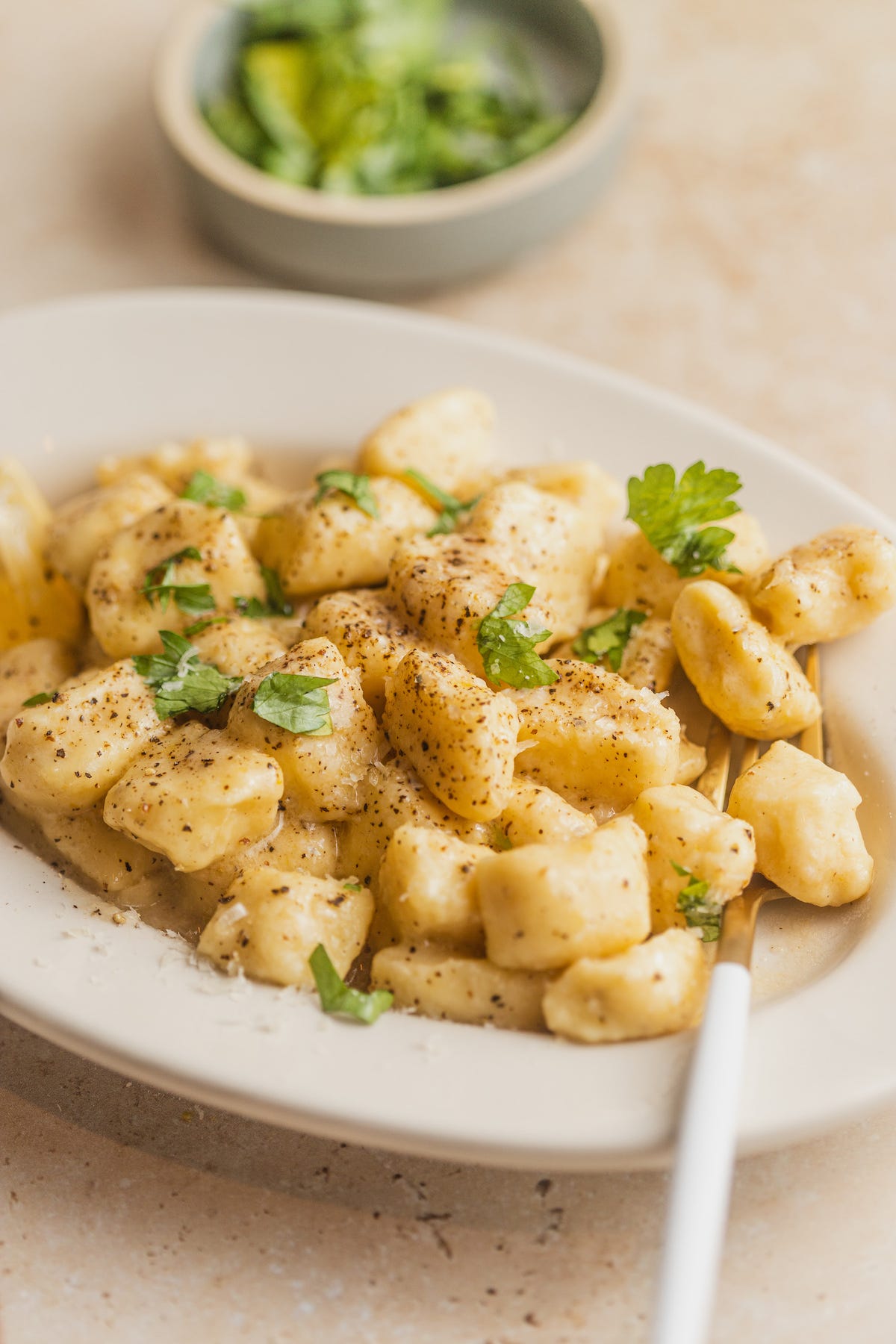Hi friends,
Have you ever tried making ricotta from scratch? It’s surprisingly simple! Light, creamy, and delicately rich, homemade ricotta has a freshness that’s worlds apart from the dense, grainy stuff you find in most supermarket tubs.
In this week’s newsletter, we’re diving into the world of ricotta: where it comes from, how it’s traditionally made, and how you can whip up a quick, milk-based version at home with just a few basic ingredients. I’ll also share a few favorite recipes that let ricotta really shine.
Whether you’re planning a spring dinner party or just want a cozy kitchen project, ricotta is a delicious place to start.
A History & Overview of Ricotta
The word ricotta translates to “recooked” because the cheese is made from recooking the leftover whey of other cheeses. Technically, "authentic" ricotta cheese is said to be made from whey, but the real story is a bit more complicated.
Whey-Based Ricotta
Leftover whey often sits out for several hours up to a day and naturally ferments. When the fermented whey is heated, the combination of acidified whey plus heat naturally curdles the liquid. The whey then separates into liquid and solid curds, which are strained to yield ricotta.
Interestingly enough, I researched the history of cheesemaking, and it turns out that Italians have been making ricotta-like cheese since the bronze age!
Back then, they cooked the milk in specialized boilers designed to prevent it from spilling over at high temperatures. Surprisingly, the use of whey to make ricotta likely came much later (as opposed to milk-based cheeses) to use up the leftovers from making other cheeses.
Milk-Based “Ricotta”
For obvious reasons, leftover whey can be hard to come by, but this milk-based rendition requires only milk, cream, salt, and acid. It’s absolutely delicious, too!
You’ll heat milk and a bit of salt in a pot until it just begins to hit a bare simmer. Since regular old store-bought milk itself is not acidic enough to curdle, you need to add lemon juice, vinegar, or citric acid to do the job.
As the milk begins curdling, you’ll turn off the heat to let it form curds. Strain the solids, and you’re done! The leftover liquid, or the whey, can be discarded or saved for other uses.
Key Ingredients
Milk
Do not use ultra-pasteurized milk. Ultra-pasteurized milk has been heated to a high enough temperature to denature some of the milk proteins, meaning the milk will not coagulate properly. Regular pasteurized milk is totally fine, as is homogenized or non-homogenized milk.
Whole milk is recommended. You can make ricotta with 2% milk (for a slightly less creamy texture), but 1% or skim milk will produce a poor yield.
“Older” milk, or milk that’s closer to its expiration date, will curdle more easily!
Heavy Cream
In addition to milk, I also like to add a bit of heavy cream (you’ll want to avoid ultra-pasteurized here, too) for richness and moisture.
PS - Leftover heavy cream is wonderful for homemade crème fraîche!
Acid
Both lemon juice and white distilled vinegar are very commonly used in cheesemaking.
You can use whatever you prefer (or whatever you have at home), but note the following differences:
Usually, white distilled vinegar is slightly more acidic than lemon juice. You might not need as much vinegar as lemon juice to curdle the milk.
Lemon juice has a stronger, well, lemony flavor. Vinegar is more neutral. Depending on the use case, it might be nice to have additional citrus notes.
Ideally, you use the least amount of acid to produce curds and limit any impact on flavor. But there’s a balance here — too little acid, and you may not produce enough curds. The good news is that you can always add more if it’s not enough!
Equipment Notes
Cooking Thermometer
A cooking thermometer, such as a candy thermometer or an instant-read thermometer, is infinitely helpful here. Reaching the correct temperature without a thermometer can be tricky if you've never made ricotta. Once you've made it once or twice, knowing what to look for is easier.
We’re looking to heat the milk to roughly around 185°F (85°C). At that temperature, the proteins in the milk re-structure in a way that results in curds with a more viscous, thickened texture.
Cheesecloth
Once the acid has curdled the milk, you can collect and drain the ricotta. Then, I layer a cheesecloth on a strainer laid over a pot to separate curds from the whey.
You can easily purchase one from the grocery store, but you can use a very thin (see-through) t-shirt if you don't have a cheesecloth handy. I like to use a slotted spoon to scoop out the curds and spoon them into the cheesecloth.
Get the full recipe below! ↓
Recipes
Whipped Ricotta: Blitz up the ricotta in a food processor or blender for an ultra-creamy texture!
Ricotta Gnocchi: These pillowy and easy homemade ricotta gnocchi are paired with a creamy, tart lemon butter sauce. It's a perfect weekend project!
Lamb Ragu: Pair this extra-savory lamb ragu with a dollop of ricotta on top.
Eggplant Involtini: This eggplant involtini recipe features roasted eggplant stuffed with an herby ricotta filling and baked in a garlicky homemade tomato sauce dotted with melted cheese.
Egg Yolk Raviolo: A step-by-step guide to making delicate egg yolk ravioli with creamy ricotta cooked in a brown butter sauce.
That’s all for this week. Happy holidays to those observing Passover and Easter!
- Karishma







